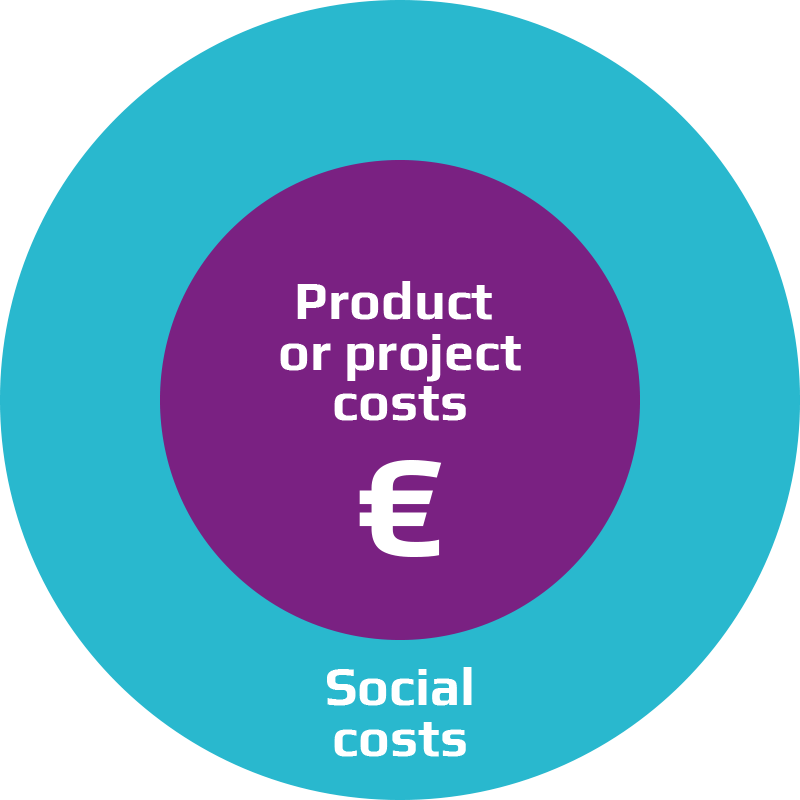ENVIRONMENTAL COST INDICATOR (ECI)
At the beginning of 2022, Cliff was tested by RoyalHaskoning DHV, KIWA and TNO to get a complete insight in the characteristics of Cliff as construction material and the impact of Cliff on the environment. Cliff’s impact on the environment is expressed in euros based on a life cycle assessment (LCA). This amount is called the Environmental Cost Indicator (ECI) and represents the social costs that are necessary to undo the environmental effects. This means that the lower the score, the lower the social costs for undoing the harmful environmental impact.
The ECI process
To determine an ECI, a life cycle analysis (LCA) is required. This is a method for calculating the environmental impact of a delivery, service, construction or entire contract, spread over certain life stages. The LCA itself is an environmental profile that is not suitable for comparison between e.g. wood and metal. So this is where the ECI comes in.
With ECI, the entire life cycle of a product is examined, from raw material extraction to production, use, (waste) processing and possible scenarios for re-use. For each phase a calculation of the environmental impact is applied. Examples of the information to be collected, are:
- Product composition
- Type of transport and distances
- Energy consumption during the production process
- Emissions into the soil, surface water and air
Applying Cliff
LCA can be spread out over five phases:
A. Production / nuilding
B. Use: maintenance and repair
C. Demolition and processing phase
D. Reuse: possibilities for reuse, recovery and recycling
The following components are calculated for each phase:
Cliff's score is based on stage A1-3. This means that the production phase and reuse are included in the score. Phase B and C are not part of the score as it will depend on the user of Cliff. The moment Cliff is bought, CLS-Tex no longer has any influence on, for example, transport and processing. Cliff won't re-appear until phase D, the reusing phase, when Cliff is shredded to be reused again for making new Cliff products.
Advantages of Cliff compared to other construction materials
Compared to other conventional construction materials such as wood and steel, Cliff has the advantage of being maintenance-friendly. Water will remove almost all common public pollution. The material is highly resistant to temperature changes and does not absorb moisture, which will minimise fading, wearing and the need for reparations.
The ECI of common wood (both soft and hard) is better than Cliff, based on A1-3. This is because Cliff's production process uses more energy when plastic and fabrics are converted into profiles. Wood is cut and sawn in phase A1-3, but lamination/painting and other treatments are not included in its calculation and determination. This treatment extends the life of wood, but also causes contamination of the product.
If you are interested in comparing Cliff with other construction materials for a specific project, do visit the website www.milieudatabase.nl or
contact us.
Would you like some more information?
If you are interested in comparing Cliff with other construction materials for a specific project, do visit the website www.milieudatabase.nl or
contact us.




